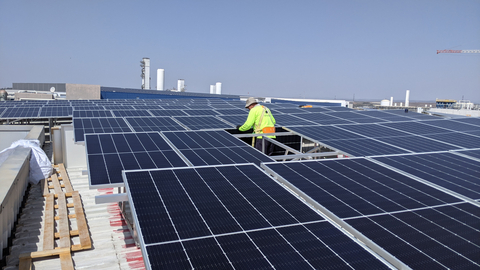Stratasys’ First Sustainability Report Champions 3D Printing Climate Action, Social Impact, Commitment to ‘Mindful Manufacturing’
Report conforms to Global Reporting Initiative Standards and provides benchmarks for future ESG targets
Stratasys Ltd. (NASDAQ: SSYS), a leader in polymer 3D printing solutions, today announced it has published its inaugural report on environmental, social and governance (ESG) activities, following GRI (“Global Reporting Initiative”) Standards for sustainability reporting. The comprehensive report outlines the company’s commitment to ESG and establishes benchmarks for future targets.

In 2021, leveraging 30+ years of industry leadership, Stratasys set its ESG strategy and formally established an executive-led ‘Stratasys Sustainability’ function as part of a commitment to more sustainable Mindful Manufacturing™ through additive-based solutions. Mindful Manufacturing is the thoughtful redesign of processes, parts and supply chains, utilizing 3D printing across the product lifecycle in a way that maximizes sustainability over time, all while supporting business growth. The company’s sustainability priorities include design for responsible production and consumption, transparency, people-first initiatives, social impact programs, renewable energy projects, quality education, industry innovation and climate action.
“I believe that global manufacturing is at a crossroads,” said Stratasys CEO Dr. Yoav Zeif. “Due to growing pressure to address supply chain challenges and energy efficiency needs, 3D printing is increasingly being explored to meet such business goals. I believe that during 2022 and into the next decade, rapid growth in the adoption of manufacturing-scale 3D printing will bring additional innovation to the market, improve supply chains and reduce environmental impact.”
“With growing adoption, advanced software platforms, and collaboration with industry-leading customers around the world, the Stratasys portfolio will continue to provide transformative technology to support the factory of the future.
“Together with our corporate purpose of empowering people to create without limits for an economical, personalized, and sustainable world, this report reflects our deep commitment to a comprehensive, industry-leading ESG strategy.”
There is a growing recognition of the potential for additive manufacturing to achieve environmental goals by reducing energy consumption and waste. For example, when compared to traditional manufacturing methods like computerized numerical control (CNC), during which materials are cut and excess is discarded, 3D printing can reduce material costs and reduce waste by almost 90%, while lowering energy consumption by 25 to 50%1. Additionally, industries like aerospace are showing a growing interest in lightweight polymer parts, which are designed to improve fuel economy without compromising durability and reliability. One global airline found that the reduction of one pound (0.45kg) of weight from an aircraft can save up to 14,000 gallons (53,000 liters) of fuel per year, driving substantial savings over its lifecycle. Stratasys estimates the polymer 3D printing market in aviation alone will grow to $1.6 billion by the end of 2025, an 18% annual growth rate, aided by advancements in lightweight 3D-printed parts.
The role that 3D printing can play in advancing social impact programs, such as STEAM education opportunities and entrepreneurship, also continues to gain support. For example, Stratasys created a “learning by making” program with Jerusalem Municipality that reaches across state-secular, state-religious, independent-religious, and Arab schools. In the U.S., the company is sponsoring the FIRST Robotics Competition for high school students and has provided access to dozens of 3D printers.
“As a leading global polymer 3D printing solutions provider, we have the ability to make a measurable impact on some of the world’s most pressing challenges, from building circularity into the economy to creating more inclusive educational opportunities,” said Rosa Coblens, Stratasys Vice President of Sustainability. “Given our position as a sustainability leader, this report demonstrates our long-term commitment to continuous self-evaluation and improvement, to helping industries be more operationally and economically efficient, and reducing supply chain reliance so we can improve our planet.”
The Stratasys 2020-2021 ESG & Sustainability Report is publicly available online at www.stratasys.com/sustainability
This content was first published on the Stratasys website.

